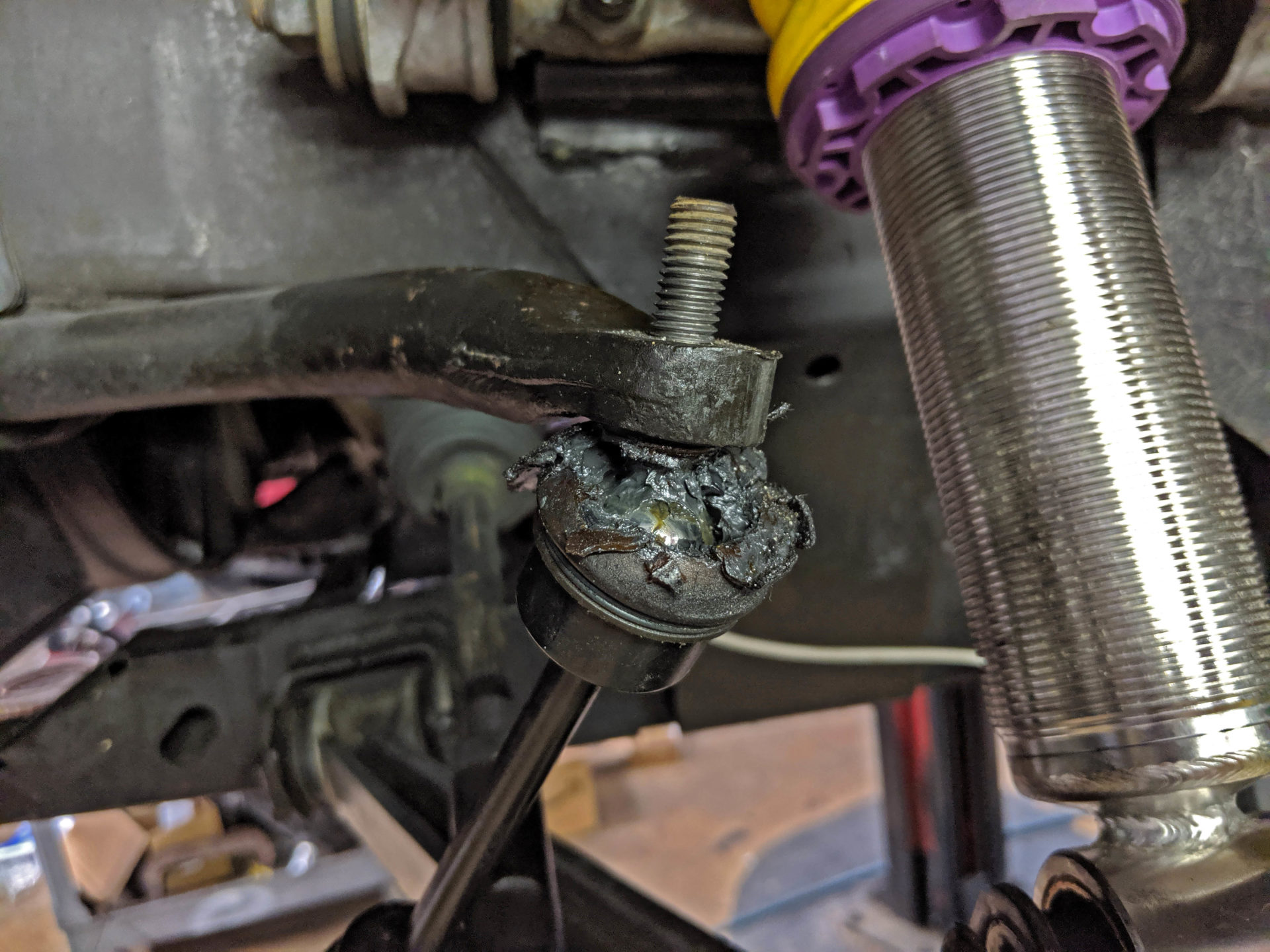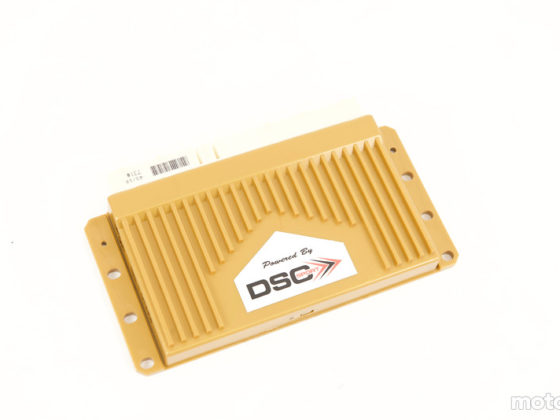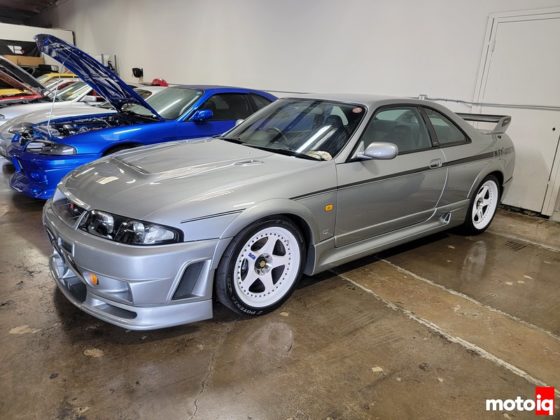 The old bushing (left) wasn’t in bad condition at all. We also lubricated our new bushing (right) with NanoPro MT Marine Grease.
The old bushing (left) wasn’t in bad condition at all. We also lubricated our new bushing (right) with NanoPro MT Marine Grease.
 Then we reinstalled the new rear swaybar bushing.
Then we reinstalled the new rear swaybar bushing.
 After removing the rear calipers, rotors, and toe-link, we were ready to remove the rear knuckle.
After removing the rear calipers, rotors, and toe-link, we were ready to remove the rear knuckle.
 The same procedure of removing the knuckle, removing the ball joint boot, flushing the ball joints with NanoPro MT Marine Grease, and re-assembling was done.
The same procedure of removing the knuckle, removing the ball joint boot, flushing the ball joints with NanoPro MT Marine Grease, and re-assembling was done.
 With new ball joint boots filled with NanoPro MT Marine Grease, new end links and swaybar bushings, we were finished with refreshing the suspension and ensuring the continued longevity of our ball joints with significantly better grease, and band new boots to keep out the elements. While the inner control arm bushings will need to be replaced at some point, based off our last track test, the bushings felt in pretty good condition with very little slop.
With new ball joint boots filled with NanoPro MT Marine Grease, new end links and swaybar bushings, we were finished with refreshing the suspension and ensuring the continued longevity of our ball joints with significantly better grease, and band new boots to keep out the elements. While the inner control arm bushings will need to be replaced at some point, based off our last track test, the bushings felt in pretty good condition with very little slop.
If you’re a fan of 90’s sports cars like I am, don’t overlook the condition of your ball joints, boots, and bushings. These cars are now 30 years old and even if they have less than 10K miles on the odometer like our Viper, they still need to be gone through and maintained to ensure their in top shape in another 30 years.
Stay Tuned for the next installment where we get back to performance modifications and fix the horrible factory brake bias of our Viper.




9 comments
I absolutely love the Viper project. Keep them coming!
Thank you for the comment. Glad to hear you are enjoying the project. Stay tuned!
Yooo finally a update, Viper Project got me woke on how based Vipers are.
They are badass big Miatas with torque.
Amazing how much new sway bar bushings and links can improve limit handling and on center feel. Especially on old cars that get driven hard!
Absolutely!
Is NanoPro MT Marine Grease safe to use on rubber? I’m not the best with grease chemistry, but my understanding is if it’s petroleum based, you shouldn’t be using it on rubber.
Great article and a good reminder to people that time take its toll on cars, even if they’re hardly driven.
Yes it is perfectly safe to use on rubber.
I love these posts on the viper, it helps a lot first time owners like myself. Thanks